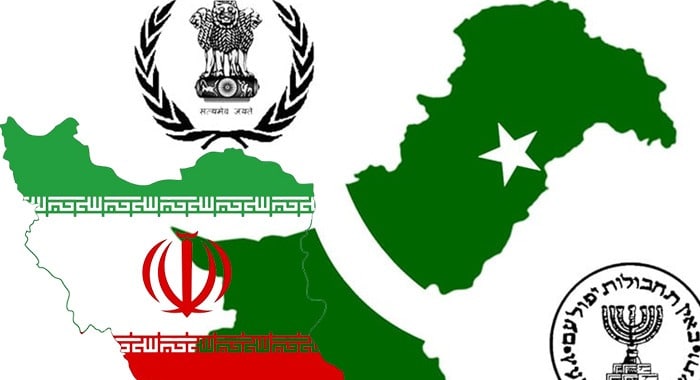A covert raid carried out by Iran’s Revolutionary Guard Corps late last night on the outskirts of Chabahar has triggered a chain of dramatic developments across the region, culminating in a decisive blow to the Balochistan Liberation Army (BLA) and its affiliated networks inside Pakistan. The operation, launched after sustained electronic surveillance, targeted a warehouse where a foreign espionage ring linked to Mossad had been operating with logistical and technical support from Indian nationals.
Iranian forces arrested 141 operatives during the operation 121 Indians and 20 Israelis while recovering encrypted satellite phones, a printed Binance wallet log, and a high-capacity hard drive. It was this hard drive that linked the Chabahar cell to separatist networks operating deep inside Pakistan.
Among the recovered files was a classified presentation titled Project Gidon-Esha. Slide 3 of the document showed red-marked zones over Gwadar Port, Panjgur, and Mand with the caption “BLA Remote Relay Nodes.” Another slide revealed a Karachi-based hub, codenamed Node-K7, functioning as a dropbox reportedly used for the transfer of smuggled funds and explosives from India to BLA and Baloch Yakjehti Committee (BYC) operatives in Pakistan.
The evidence was swiftly shared with Pakistani authorities. Without delay, Pakistan launched a series of night-time operations in Balochistan that directly responded to the findings from Chabahar.
In Panjgur, Pakistan’s Counter-Terrorism Department moved quickly to seal a BLA arms cache, disrupting a key source of weapons used in regional attacks. In a separate raid in Turbat, security forces dismantled a BYC-run media cell, where several individuals were arrested and digital material matching Project Gidon-Esha was recovered—identical to the documents seized by Iranian forces. This confirmed a direct operational link between foreign-backed saboteurs and separatist actors inside Pakistan.
Meanwhile in Quetta, authorities traced financial records from Iranian oil smuggling operations to fuel pump owners whose transactions were found to be tied to accounts associated with RAW and the BLA. These developments led to immediate legal action and asset freezes.
Over the next 24 hours, the impact of these coordinated actions became visible. The BLA’s supply routes were cut off, severely disrupting its capacity for armed violence. The BYC’s online propaganda campaign also collapsed; dozens of fake social media accounts were taken offline and its widely circulated disinformation drive, Swing Break, was rendered inactive.
Officials described the events as a breakthrough in dismantling the foreign-engineered structure sustaining violence in Balochistan. The sequence of operations—beginning with the Chabahar raid and culminating in sweeping actions across Pakistan—laid bare the network of subversion and exposed the role of hostile foreign agencies in arming, financing, and directing banned militant groups.
The Balochistan Liberation Army, already designated as a terrorist organization for its repeated attacks on civilians and security personnel, now stands further discredited—revealed as a proxy force sustained through foreign funds, foreign weapons, and foreign agendas.
This series of developments has reaffirmed regional consensus on the need to confront and dismantle externally sponsored militancy. What began as a single raid on Iranian soil has ultimately fractured a multinational web of sabotage designed to destabilize Pakistan and disrupt regional peace.





